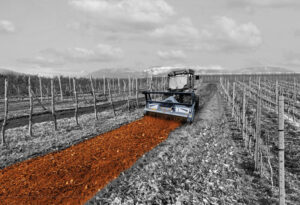Forestry mulchers have evolved into essential tools for a wide array of land management activities. Their ability to shred vegetation on-site, adapt to various terrain conditions, and integrate with multiple carriers makes them ideal for operations ranging from fire prevention to access route construction. This versatility positions mulchers as key assets across both public and private sectors.

Fire mitigation: creating defensible spaces
In wildfire-prone regions, vegetation control is a fundamental part of risk reduction strategies. Forestry mulchers are widely used to establish firebreaks by eliminating underbrush, small trees, and surface fuel loads. This process creates buffer zones that slow or halt the spread of flames, particularly in the wildland-urban interface.
Unlike conventional clearing methods, a forestry mulcher reduces biomass into fine material, promoting decomposition and reducing fuel continuity. Its capacity to function efficiently on steep slopes and uneven ground allows operators to intervene rapidly, even in high-risk scenarios.
Machines equipped with appropriate cutting rotors and reinforced components ensure reliability under intense workloads, making them suitable for both preventative and emergency deployment.
Trail creation and land access
Forestry mulchers also support infrastructure development in natural and semi-natural environments. When creating new trails or restoring overgrown pathways, their ability to clear dense vegetation while preserving root systems below grade is particularly valuable. This limits soil disturbance and contributes to long-term trail stability.
Operators can mount mulchers on excavators for extended reach in tight or remote areas, or on skid steers for agile movement in constrained spaces. The result is fast, controlled clearance that facilitates the development of hiking trails, utility access roads, and service lanes. As the shredded material is left in place, there is no need for secondary cleanup or hauling, which significantly reduces total project time and cost.
Other strategic applications: from agriculture to ROW maintenance
Forestry mulchers also play a significant role in specialized sectors such as agriculture and utility management. In orchards and vineyards, they streamline post-pruning cleanup, removing wood debris and light vegetation between rows. This enhances field hygiene and minimizes the risk of pest infestation.
For utility corridors – such as power lines, pipelines, and aqueducts – mulchers enable continuous maintenance with minimal environmental disruption. Their precise cutting action ensures vegetation is cleared without damaging nearby structures or compacting soil unnecessarily.
Urban and residential green spaces also benefit from mulching operations, particularly during seasonal maintenance or site redevelopment. By adapting to a wide range of working conditions and vegetation types, forestry mulchers support operators in environments where precision and reliability are non-negotiable.
Operational efficiency and environmental benefits
Forestry mulchers consolidate multiple functions into a single pass, optimizing both time and fuel usage. By eliminating the need for cut-and-remove methods, they reduce vehicle movement on-site and lower overall emissions.
Additionally, the fine mulch left behind acts as ground cover, helping to preserve soil moisture and reduce erosion. In sensitive ecosystems, this feature can contribute to natural regeneration while preventing invasive species from establishing dominance. It also simplifies logistics and supports more sustainable land care practices by removing the need to dispose of residual material.
Enhancing operational value with the right tools
From fire line construction to agricultural cleanup, forestry mulchers have demonstrated unmatched adaptability in the field. Their integration into modern land management strategies reflects a broader trend toward efficient, environmentally conscious equipment capable of meeting varied operational demands. Selecting the right mulcher for each scenario ensures not only effective results, but also long-term value across multiple applications.
FAE forestry mulchers: engineered for durability and consistent results
Founded in 1989, FAE has established itself as an industry leader in the design and production of professional attachments for tractors, excavators, skid steers, special vehicles, and tracked carriers. Active in sectors such as forestry, agriculture, infrastructure maintenance, and demining, the company offers high-performance solutions developed to meet the operational challenges of land clearing and vegetation control.
The FAE range includes over 400 models, organized into more than 90 product lines, specifically designed for applications such as ground preparation, forest maintenance, and selective vegetation removal.
FAE forestry mulchers stand out for their robust design, use of high-quality materials, and integration of advanced components, ensuring reliability and performance under intense operating conditions.
Built to handle trees, trunks, stumps, roots, branches, and shrubs up to 20 inches in diameter, these machines deliver efficient and uniform shredding across a wide range of terrains. Their versatility enables compatibility with different types of carriers, making them suitable for complex environments including wooded areas, steep gradients, fire-damaged sites, and utility corridors.
Backed by decades of experience and a continuous focus on innovation, FAE forestry mulchers offer durability, operational flexibility, and trusted performance for professionals working in the most demanding field conditions.







